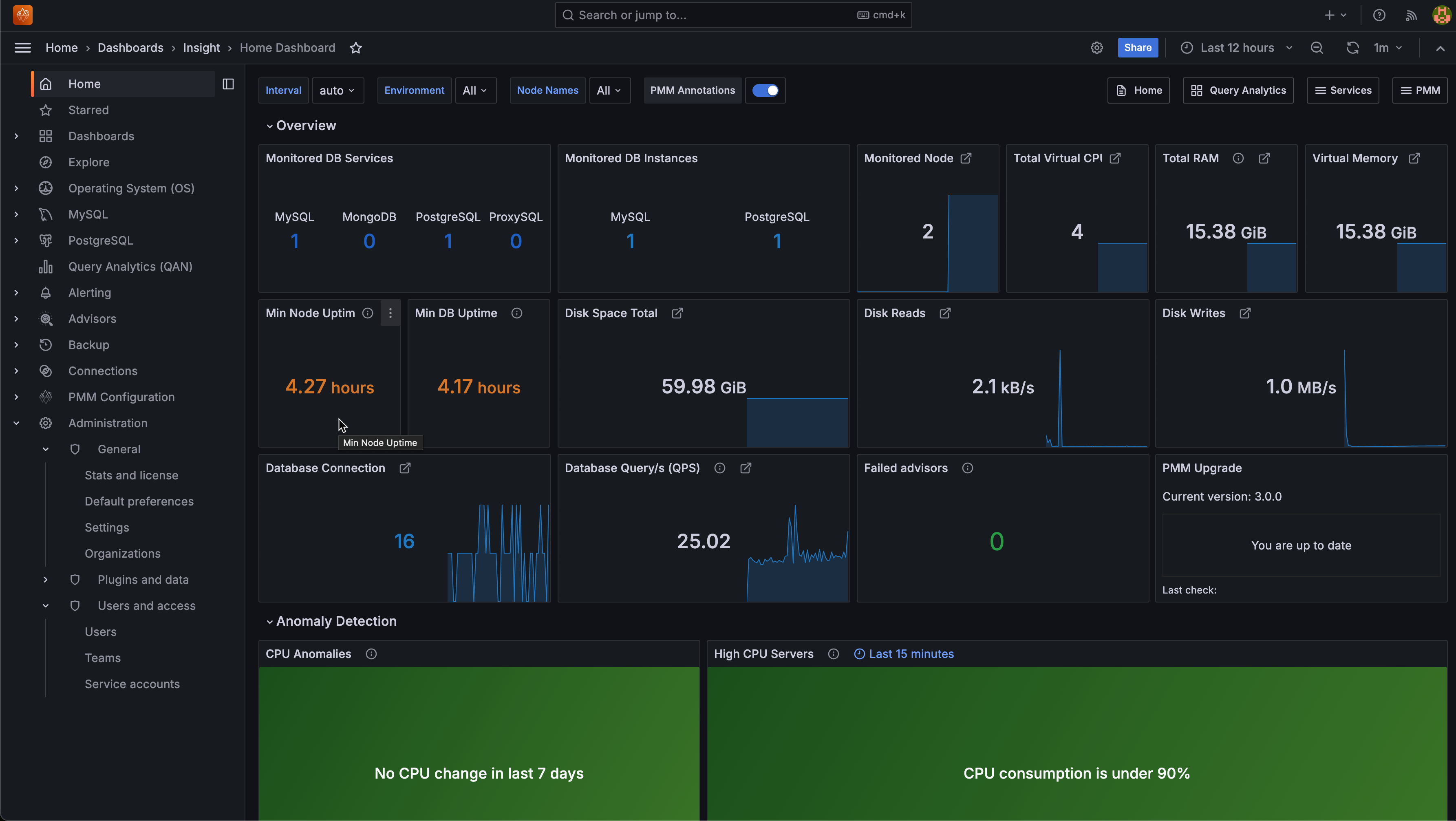Deploy PMM Server on AWS¶
After planning your instance size, storage, and network requirements, deploy PMM Server from AWS Marketplace to get monitoring running.
Launch PMM Server from AWS Marketplace¶
To launch PMM Server via AWS Marketplace:
-
Go to AWS Marketplace and search for Percona Monitoring and Management Server or access the PMM Server listing directly.
-
Click Continue to Subscribe on the PMM Server listing page, review the terms and conditions, then click Continue to Configuration.
-
Select the latest version (recommended), choose the AWS region where you want to deploy PMM, then click Continue to Launch.
-
Choose Launch from Website to configure and launch directly from the AWS Marketplace or Launch through EC2 if you prefer launching via the EC2 Management Console for more customization.
-
In the EC2 Instance Type field, select an appropriate instance type based on your monitoring needs and anticipated load. For information on instance sizing and storage, see Plan PMM Server deployment from AWS.
-
In the VPC Settings field, choose an existing VPC or create a new one to host your PMM Server.
-
In the Subnet Settings field, select an existing subnet or create a new one within your VPC.
-
In the Security Group Settings field, choose an existing security group or create a new one. Make sure the security group allows inbound traffic on the Required Ports listed below.
-
In the Key Pair Settings field, select an existing key pair for SSH access, or create a new one if necessary.
-
Click Launch to deploy the PMM Server instance. Once the instance is launched, it will appear in the EC2 console.
-
Assign a meaningful name to the instance to help distinguish it from others in your environment.
Access the EC2 console¶
Monitor the deployment progress and access your instance through the EC2 console:
- Click the EC2 Console link that appears at the top of the confirmation page after launching, or go directly to the EC2 Console.
- Locate your new PMM instance in the EC2 instances table. Initially, its Status shows “Pending” while launching and the Name will be empty.

Monitor instance status¶
Monitor your instance deployment progress through its status checks:
| Status | Description | Expected duration |
|---|---|---|
| Pending | Instance is being created | 1-2 minutes |
| Running | Instance is active and accessible | Ready for use |
| Status Checks | System and instance checks | 2-5 minutes |
Initial PMM Server access¶
Once your instance status shows “Running” and passes all status checks in the AWS console:
-
In the EC2 console, select your instance and copy its IPv4 Public IP in the instance details or the Public IP field from the Properties panel:
-
Open the IP address in a web browser and log into PMM using the default credentials
admin/your instance ID.
-
Change the default credentials then use the new ones to log in to the PMM Server home page. You will reuse these credentials when configuring PMM Clients on other hosts.

Configure PMM Server and IP settings¶
After initial access, configure your PMM Server’s security groups and IP addressing.
Required ports¶
For proper PMM Server functionality and access, ensure your security group allows communication via the following ports:
- Port 22 (SSH): Administrative access to the instance
- Port 80 (HTTP): Initial PMM web interface access
- Port 443 (HTTPS): Secure PMM web interface access
- Port 3306 (MySQL): If monitoring RDS instances directly
Security reminder
Your PMM instance is now accessible via the internet. Ensure your security group settings restrict access to trusted IP addresses only.
SSH access¶
For SSH access instructions, see Connecting to Your Linux Instance Using SSH.
Replace the user name ec2-user with admin. You can also add SSH keys later through the PMM Configuration > Settings > SSH Key page.
Next steps¶
With your PMM Server deployed and accessible:
- Configure PMM Server for security and authentication
- Configure PMM Clients to start monitoring your infrastructure
- Register client nodes with your PMM Server
- Improve PMM EC2 instance resilience using CloudWatch Alarm actions
- Simplify use of ENV eariables in PMM AMI
